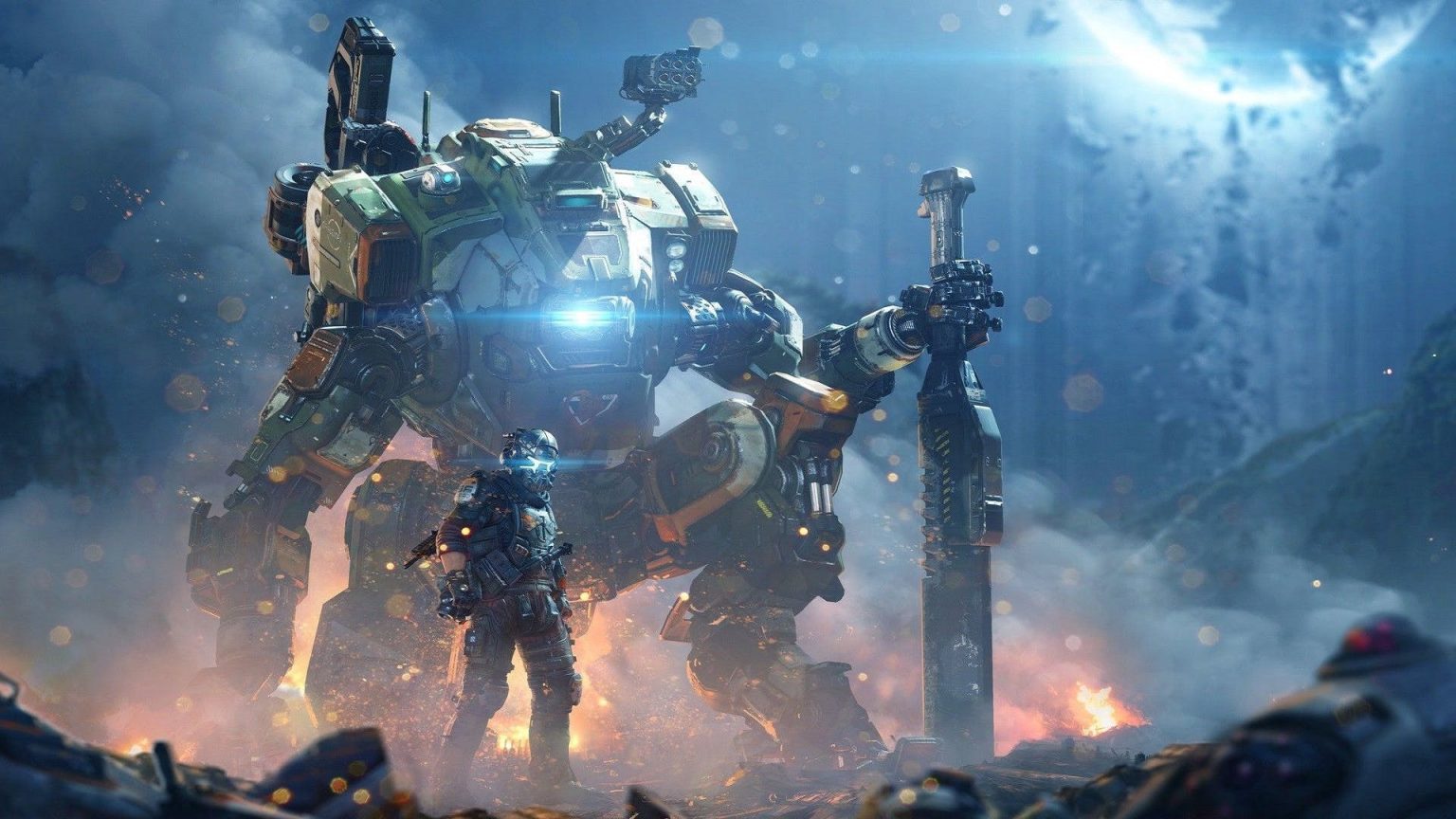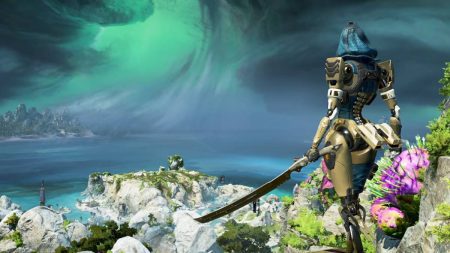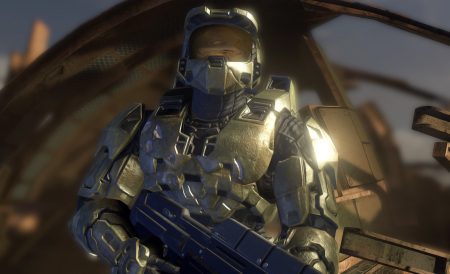Welcome to the latest post in our “Punished Hall of Fame” series, where we celebrate our favorite games (and consoles) throughout the history of the medium. After taking a look at Donkey Kong Country 2 and the Xbox 360, The Punished Backlog sets its eyes on a more recent masterpiece: the Titanfall 2 campaign.
Standing Out From the Pack
For better or worse, popular video games tend to rely on tropes to tell their stories. Whether you’re adventuring through a haunted house, saving the princess from a dragon, or seeking to stave off an impending zombie apocalypse, players often find themselves using a controller to express how they’d navigate scenarios taken from other forms of popular media. And despite many AAA studios targeting more narratively mature and creative experiences, frequently those titles amount to interactive cinema based on clichés rather than truly original works.
What helps a game stand out from the pack isn’t just a combination of tight mechanics, technical execution, and good production value, but also clear narrative through-lines and thematic consistency. If everything around a game’s tropes is done well enough (and, in some cases, innovates through gameplay), then the whole experience can be truly mesmerizing. The title can justify its own existence outside of the player’s desire for games reminiscent of their favorite films. But what does that look like? How do you create a seemingly unique enterprise out of fundamentally unoriginal ideas?
Five years ago, Respawn Entertainment answered this question.
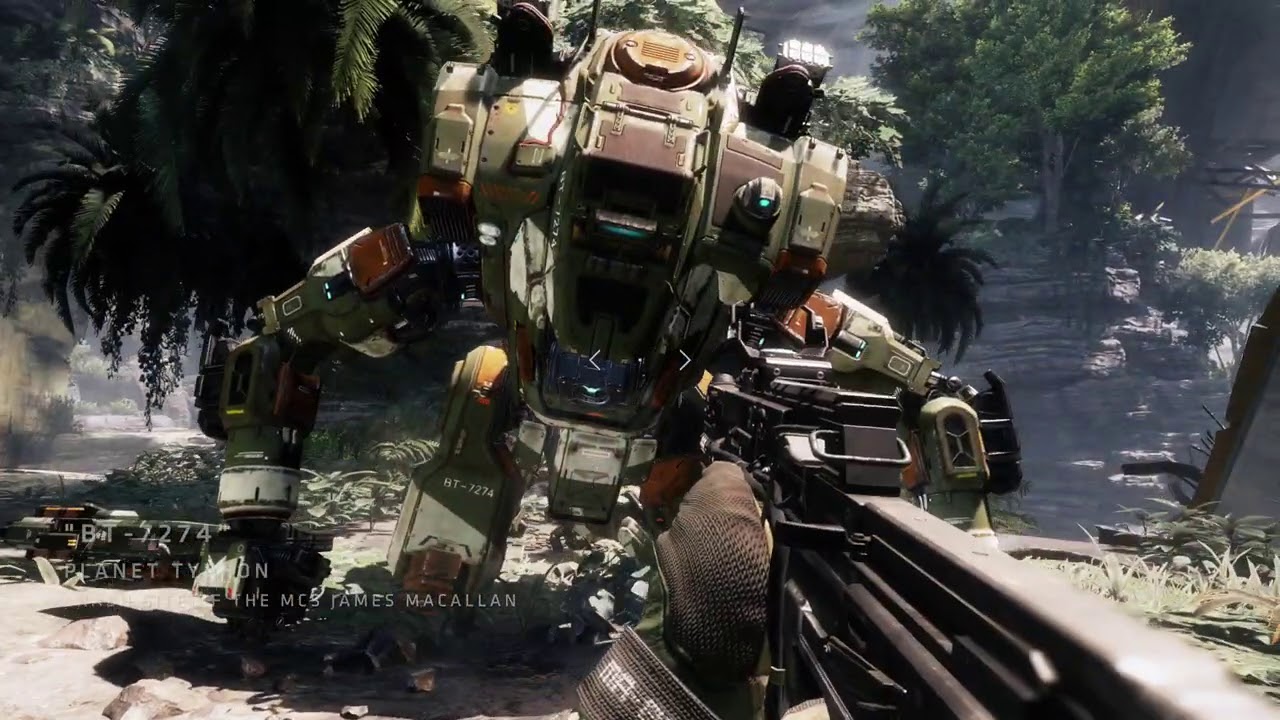
My Friend Needs Batteries to Live
Titanfall 2, released in 2016, depicts a futuristic universe beset by war, where a group known as the Frontier Militia fight for independence against the Interstellar Manufacturing Corporation (IMC), which wants to exploit the Frontier’s resources with no regard for the potential environmental and civilian consequences.
Following a chaotic and bloody battle, young Frontier Militia rifleman Jack Cooper ends up syncing with his fallen commander’s titan, a giant mech used for battle, and goes on a series of missions to figure out what evil weapon the IMC seeks to use and attempt to stop them. Through the course of a roughly five-hour adventure, Jack and his titan, BT-7274, create a strong bond that not only results in more effective combat and problem solving, but also in a humorous and heartwarming friendship between man and machine.
On paper, Titanfall 2’s plot isn’t anything special, nor is it original by any means. We’ve been telling countless stories about wars involving humans and machines, and having sentient beings develop close personal relationships with robots is fairly well-trodden territory (The Iron Giant, Terminator 2, Star Wars, WandaVision, Blade Runner). This kind of friendship isn’t even uncommon in games (Borderlands, Fallout 3, Ratchet & Clank, Chrono Trigger).
What makes this connection between Jack and BT-7274 flourish, however, is the way in which developer Respawn builds that relationship through gameplay. When the player first meets their new titan, their helmet is synced with the mech’s operating system, and the player doesn’t have the opportunity to actually commandeer the machine until they’ve acquired energy cells to power it. BT explains to Cooper where to find these batteries and gives him instructions on how to find them from a distance, establishing a verbal connection between the two before a physical one. Once Jack has fully powered up BT, he can enter the machine and control its movements, thus creating the physical side of the relationship.

The way Titanfall 2 has the player complete missions largely on foot and only partially while piloting the titan highlights how the relationship between Cooper and BT is a partnership; BT is not simply a tool. Sure, it’s a boatload of fun to enter the mech and wreck shit, but creating that space makes those sequences all the more satisfying, as the player is forced to view each conflict from multiple perspectives. In a sense, most human relationships are at least partially defined by this discrepancy, where both parties may share common views and interests, but don’t necessarily experience the world the exact same way.
Ultimately, it’s the way BT and Cooper communicate with each other (both verbally and physically) that elevates Titanfall 2 from a very good shooter to a genuinely moving experience. As the story progresses, BT becomes more comfortable using informal language with Cooper, going from calling him just “pilot” at the start, then to “pilot Cooper,” and then in a triumphant reunion moment, finally calling him “Jack.” Whenever Cooper tells a joke or makes a sarcastic comment, BT answers literally, clearly not getting his pilot’s humor. These responses begin to fade away as the game enters its final moments, as the titan has learned to adapt the way he speaks to the way his pilot speaks.
On the physical side, BT learns to give Jack a “thumbs up” when completing missions, and in several moments thrusts himself over Jack to protect him from danger, the way a mother protects her child. Over the course of the campaign, BT gradually starts to view Jack as not just his newest pilot, but also his friend, someone he would die for without hesitation.
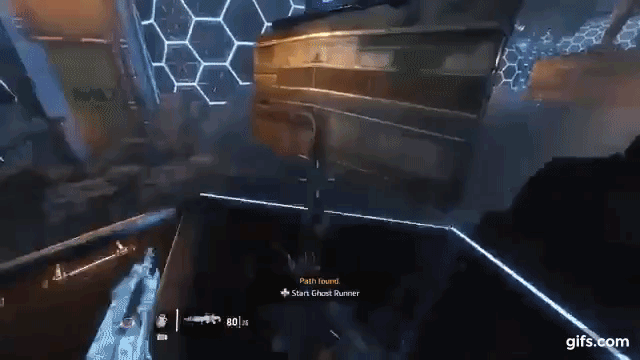
Parkour!!
Moments like these are interspersed between some of the most crisp, chaotic, and flashy gameplay sequences I’ve ever experienced in a first-person shooter. When in “pilot” mode (i.e., normal non-mech FPS mechanics), the tools at your disposal go beyond basic shooting, melee attacks, and grenade throws. You can double-jump, slide, run along walls, and use a rechargeable cloaking device. In some free running sections, it almost feels like flying, and in most basic combat scenarios, you have the tactical finesse of Solid Snake crossed with the swift brutality of the Doom Slayer. Certain levels introduce context-specific abilities, including a tool that allows you to turn off and on large machines from a distance and even a device that enables instant time travel.
These pilot sequences—which are all beautifully designed with platform challenges, multiple enemy types, and even doses of stealth—would make Titanfall 2 stand out on its own. But it’s the titan set-pieces—large robot battles you only get to experience in certain parts of each mission—that make Titanfall 2 all the more thrilling. They’re essentially a reward for all your hard work, and even though the pilot scenarios are incredible, I yearned for any moment I got to enter the titan and use all of its incredible weaponry to clear the field of all threats.
That’s where Titanfall 2’s pacing and gameplay philosophy line up with its story: Even though I was having a blast doing super parkour as the pilot, I still just wanted to be with BT, and not just so I could fire a barrage of missiles at other large machines. The game tells you in so many ways about the pair’s connection, but the actual gameplay loop made that friendship feel real. Absence makes the heart grow fonder, as they say.
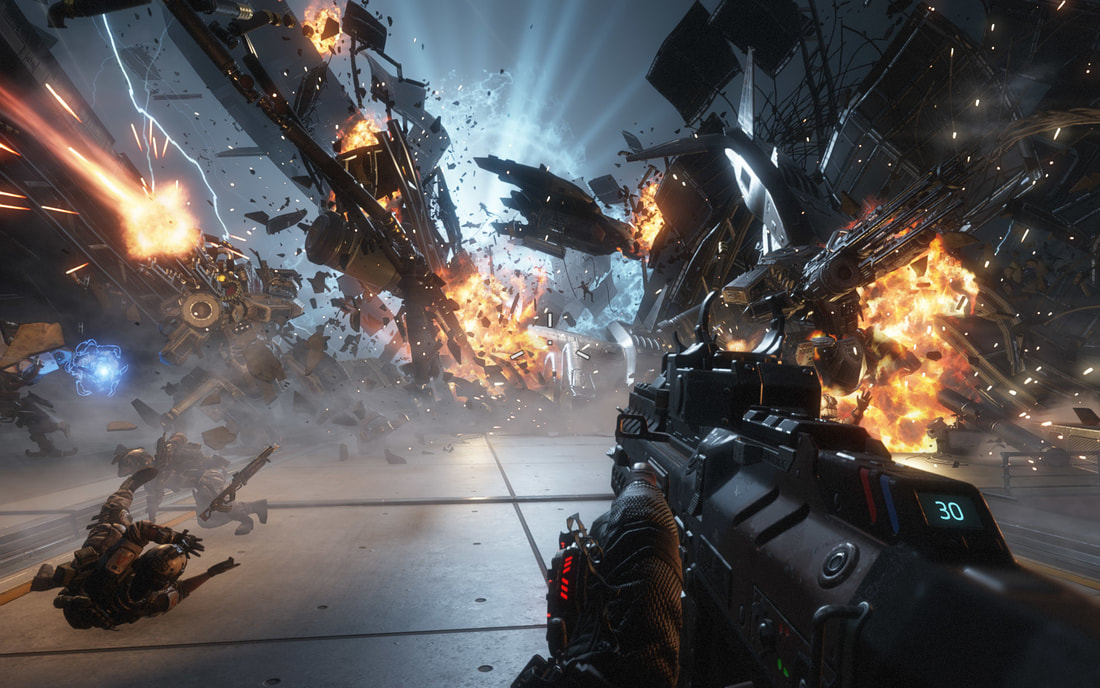
Raging Against the Machines
Titanfall 2’s exploration of man vs. machine goes beyond the friendship between BT and Cooper. Virtually every stage of the story is a visual comparison of natural life and technology, or more broadly the dichotomy of order vs. chaos. The buildings, vehicles, and weapons all appear sleek and high-tech, while the natural landscapes outside these structures are craggy, vine-wrapped, and full of moss and other natural growths. Everyone operating within the futuristic structures has a clearly defined role (especially the human-sized robots that operate most of the heavy machinery), while beasts roam the wildlands in search of prey. These dinosaur-like animals do not seem to fear anything, and will attack anyone and anything on sight. As enemies, they are vicious and unpredictable, whereas the “civilized” humans and robots behave in predictable, ordered fashion.
Certain level goals express this disparity beautifully. “Effect and Cause,” the game’s best mission, involves Cooper using a time travel device to navigate through a fallen building in search of clues. Using this device, Cooper moves between the current broken structure, which houses many fires and zombie-like malfunctioning robots, and the pristine research facility that it was prior to a major disruption. The player not only uses this device to travel effectively throughout the facility, with certain pathways only existing in one time and not the other, but also to see how quickly a fully functioning structure can be reduced to a mountain of entropy.
An earlier mission, “Into the Abyss,” tasks the player with making their way through an assembly line that manufactures houses in order to create what is effectively an artificial town for people to (presumably) live in. This sequence highlights the way the IMC views everyday home life as something that can be fully commodified, from the assembly of the homes themselves to the way they’re all placed neatly together to create a community, almost the way one would solve a puzzle. Most of the enemies in this mission are robots as well, which makes sense given how automated everything else in this area feels.
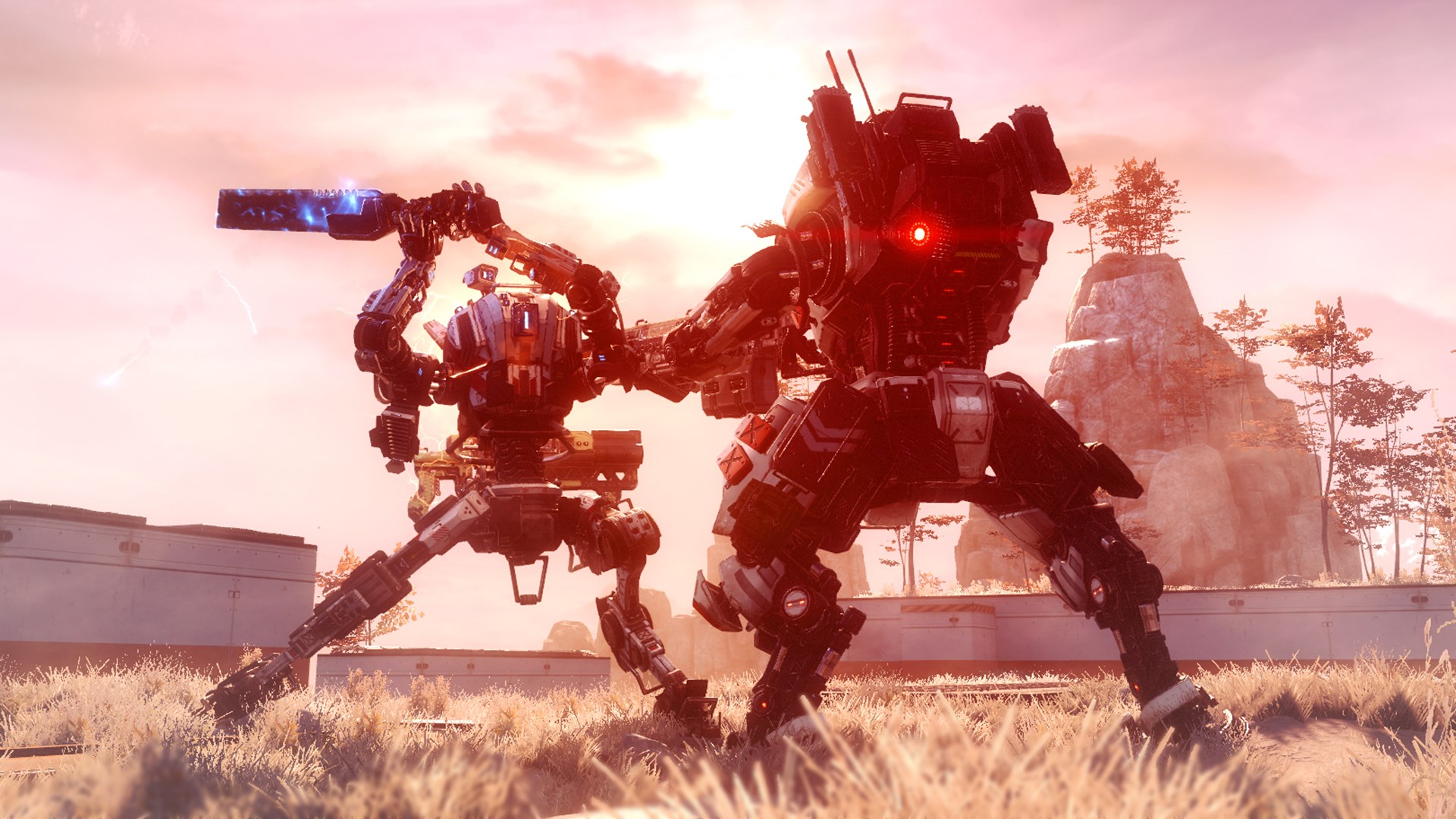
Even the language used throughout the game underscores this divide. The main enemy isn’t an army or a nation; it’s a corporation, a structure that seeks to achieve optimal efficiency and maximize its own gains. The militia comprises multiple army ranks, but it’s notable that the soldiers with the most autonomy over their own movements and the movements of titans are called “pilots,” implying a sense of control over their actions.
Even the IMC’s bounty hunters, who serve as the game’s boss battles, follow strict guidelines, as one spares Jack Cooper’s life because “it wasn’t in his contract.” The villains in Titanfall 2 aren’t just exploiters and destroyers; they’re agents of rules and automation, while the Frontier Militia is there to burn it all down and redefine the very idea of a machine.
In a sense, very “human” emotions like love, passion, guilt, and regret are forms of chaos. They disrupt and distract us from each day’s mundane cycles, as staying the course in an ordered fashion typically involves foregoing such intense feelings. When machines control all the intricacies of daily life, such powerful emotions only serve to derail everything, even though that derailment can be what makes life magical in the first place.
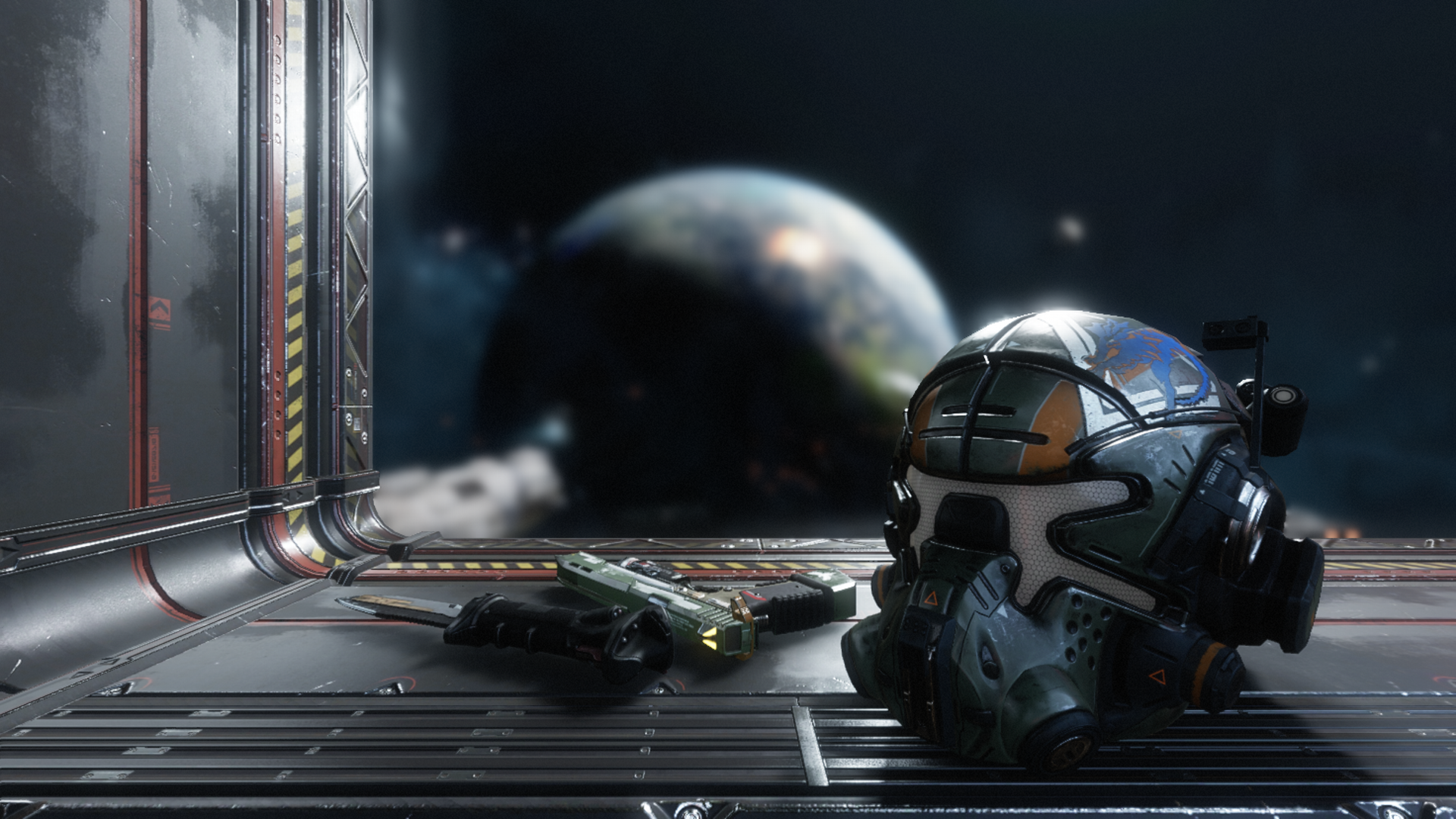
Causes and Effects
So why is Titanfall 2 a Punished Hall of Famer? Because between the bombastic set-pieces and buttery-smooth FPS gameplay lies a story about compassion and connection in a world where technocracy reigns supreme.
The single-player campaign for Titanfall 2 is more than an incredible showcase of tight mechanics and intricate level design; it’s a demonstration of how to find humanity in an increasingly technological landscape, even if that humanity is found in a giant gun-wielding robot. In a world where our own daily lives increasingly rely on technology to the point where it’s nearly impossible to truly “unplug,” we must remind ourselves that there can be beauty within chaos.
Thank you for reading the newest edition of Punished Hall of Fame. We expect to have more of these on the way, so stay tuned to read about some really amazing games!
Sam has been playing video games since his earliest years and has been writing about them since 2016. He’s a big fan of Nintendo games and complaining about The Last of Us Part II. You either agree wholeheartedly with his opinions or despise them. There is no in between.
A lifelong New Yorker, Sam views gaming as far more than a silly little pastime, and hopes though critical analysis and in-depth reviews to better understand the medium's artistic merit.
Twitter: @sam_martinelli.


